LG have a reputation to live up to, having produced what we called 2015’s Smartphone of the Year. The LG G4 was a brilliant mobile phone. It had a great, big, user replaceable battery, coupled with the best mobile camera on the market last year. As good as Samsung’s Galaxy S6 was, the G4 was better from a technical standpoint.
However, 2015 wasn’t all smooth sailing for LG.
While its competitors had flagships in market, LG waited to launch the G4 until the end of April, and it wasn’t on sale for another six weeks after that. Without a shadow of a doubt, being late to shelves hurt LG G4’s success, but there wasn’t anything else significantly wrong with it. I suspect the competition have a much larger marketing budget.
Fast-forward to 2016, and we’re seeing elements of the same playing out.
Samsung have their flagship in market (and have done for a month or so), and this year, both HTC and LG are looking at a first week of May launch. However, in 2016, the competition has caught up. Samsung’s S7 range both feature large batteries, and the cameras have improved quite a lot. They’re easily some of the best cameras on the market. Even in battery life, an area where Samsung has traditionally been awful, the Galaxy S7 range perform well; the S7 Edge battery goes forever.
With this kind of competition, can LG G5 remain the best in class? Not across the board.
The camera in the LG G5 is quite a bit better than the LG G4’s, and it could be on par with the Galaxy S7, but it probably isn’t better (though it does have some neat tricks). The battery life remains good — we got more than six hours of screen-on time — but it’s not as great as it was. The Galaxy S7 Edge lasts quite a bit longer, and the Galaxy S7 a touch longer again.
Given that battery life and camera are the things people care most about, and the LG G5 mightn’t be the best in either field, let’s take a closer look and see how it goes overall.
LG G5 Hardware
LG’s G5 is just shy of 15cm tall, 7.4cm wide, and around 8mm thick, and it weighs in at 159g. In physical dimensions, its virtually indistinguishable from the competition this year, and that’s probably a good thing — this size is a sweet spot for mobiles.
The design language is also quite different from the models before it; the curves of last year? Gone. Rear-mounted volume buttons? Gone. Plastic feel? Gone too.
In fact, the G5 is a metal body phone that doesn’t feel overly metallic. There’s little on the front of the phone beyond the glass pane which slopes gently at the top, and the sides have little more than a volume rocker and SIM/MicroSD tray. The power button is on the rear, integrated with a fingerprint reader. G5 is minimal, and it is elegant.
LG’s display
Featuring a 5.3″ display, the LG G5 sits right between the Galaxy S7 (which is a touch too small) and the Galaxy S7 Edge (perhaps a touch too big). I find that the display is just the right size to comfortably use one handed, and equally, to type two-handed on. The S7 Edge led to a higher than usual error rate in typing, but to channel Goldilocks, the G5 is just right.
The G5 display is one of its special features; like the Galaxy S7 range, it can be always on, showing you the time, notifications, and a bit more. However, unlike the Galaxy S7, it doesn’t quite work so well. You see, Samsung’s phones use an AMOLED display, allowing the display to quite literally only power (and light) the pixels it needs to display content. In other words, there’s quite a bit of battery saving to be found by working like this. G5’s display is an IPS Quantum Display; it’s gorgeous, to be sure, but the whole screen is powered up to display the always-on content, and while it’s only dimly lit, it has to be using a bit more power than Samsung’s solution does.
On the plus side, though, LG’s always on display is more useful. It doesn’t just show missed calls or SMS messages; all your notifications can be shown, including Telegram notifications, WhatsApp, your email client of choice … in fact, any notification can be shown, and that makes the always-on feature so much more useful.
In the hand, the feel is just about perfect. I liked most things about the S7 Edge (the previous phone I reviewed, in fact), except for the size of the display (can’t use it single handedly) and the in-hand feel (the curved edges aren’t great). The G5 has neither issue. It’s great to look at and great to fondle.
What’s inside
Below the metal unibody exterior of the G5, we find the same (or substantially the same) configuration as each of the competitors; a Snapdragon 820 SoC coupled with 4GB of RAM and 32GB of storage. The Snapdragon 820 is a quad-core, 2.2GHz CPU which works in 64-bit. Let’s take a closer look at the key specs:
| Key Specifications: | LG G5 |
|---|---|
| Release date | April 2016 |
| Screen size | 5.3-inch |
| Screen technology | IPS LCD |
| Resolution | 2,560 x 1,440 |
| PPI | 554 |
| Rear camera | 16MP (8MP wide angle) |
| Front camera | 8MP |
| Chipset | Snapdragon 820 |
| Core config | Unspecified |
| RAM | 4GB |
| Storage | 32GB |
| MicroSD | Yes, 200GB |
| Battery | 2,800 mAh |
| Battery removable | Yes |
| Connector | USB C |
| Headphone Port | Yes |
| Headphone Location | Top |
| Speaker Configuration | Bottom |
| NFC | Yes |
| Android OS | Android 6.0 |
| Vendor skin | LG UX 5.0 |
| Dimensions | 149.4 x 73.9 x 7.7-8.6mm |
| Weight | 159g |
| Colours |
|
32GB storage might not feel like enough, and LG continues its heritage of MicroSD expandability here, supporting MicroSD cards up to 200GB. While Android 6.0 supports storage adoption (effectively increasing the internal storage on a this phone to 232GB), LG have disabled it because — and I have to agree with them — the solution is imperfect. It doesn’t work quite so seamlessly.
[staticbox type=”static-right” image=”http://ausdroid.net/wp-content/uploads/2016/04/qualcomm-snapdragon-820.jpg” title=”Qualcomm’s Snapdragon 820″] Unlike last year’s Snadragon 810 (which kind of sucked), the Snapdragon 820 has been vastly redesigned. It’s just four cores instead of eight, and it runs up to twice as fast, and uses half as much power, compared to the 810.
The make-up of the cores is different too; we’re familiar with hearing about Krait cores, and with the Snapdragon 820, we need to get familiar with Kyro. Qualcomm describes Kyro as the company’s first custom-designed 64-bit quad-core CPU, tightly integrated with the Adreno 530 GPU and Hexagon 680 DSP (for low-power sensor processing).
In short, this thing kicks ass, and the measurements don’t like. In raw performance, measured by Antutu 6.0, the Snapdragon 820 performs 54% faster than the Snapdragon 810.
There’s a reason just about everyone is using it right now.[/staticbox]
A note on build quality
There’s been a lot of discussion about the actual build quality on the LG G5, especially around the quality of the removable base / replaceable battery. Some have gone as far as to say that the quality isn’t there, that it looks cheap, nasty, unrefined, not finished… I just don’t know what these people have been reviewing.
Whenever a phone battery is user replaceable, some part of the phone has to be removed, or opened, in order to access it. There’s not really any secret in this. With Samsung’s Galaxy S5, the back of the phone could be removed to access the battery. With the LG G4, it was the same, the leather (or plastic) back could be removed to access the battery. With the G5, LG has gone a different way, with a removable base instead, and I have to say, I prefer this. It’s just easy.
To swap the battery out, you press a button hidden on the bottom left side of the phone (it really is quite difficult to accidentally press, and yet easy enough to press deliberately). Pull the base slightly, and it comes away, and you can then readily swap the battery for another, or you can swap the base for the LG Cam Plus or B&O HiFi DAC.
Yes, it’s true, the fitting is not 195% perfect. As you can see in our photos, there’s a difference in alignment between the removable bottom and the phone body, however that difference is less than 0.25mm, at most. In fact, the difference is so subtle that you can probably hardly see it, unless you blow the photo up to full size. While acknowledging this, we must also acknowledge that you cannot feel the difference, and you wouldn’t notice it in ordinary use. In fact, I’d be amazed if anyone who didn’t know the bottom was removable would be able to discern anything wrong. Why?
Because there is nothing wrong.
I think some reviewers have just been a bit (and by bit, I mean quite a bit) too picky here. This slight imperfection doesn’t make the entire G5 imperfect; far from it. It’s a minor thing, and it gives us two great big things to compensate: a user-replaceable battery, which allows us to buy and carry spares for busy days, or a number of days away from a charger, and it gives us an accessory port to connect some of LG’s Friends (which we’ll talk about more, later).
LG G5 Camera
With LG’s G5, there’s three cameras we need to talk about instead of the usual two. Let’s deal with the front-facing camera first, because its the one that – quite frankly – least of us really care about. It’s an 8MP sensor, which is 3MP larger than both Samsung and HTC are using this year. That means bigger, arguably higher quality, selfies for us all. Selfie cameras aren’t where the magic happens, though, so let’s take a look at the business end.
Samsung’s Galaxy S7 takes a nice landscape photo, don’t get me wrong, but this is better.
The G5 has two cameras on the back, not unlike HTC’s One M8. However, unlike HTC’s One M8, these two cameras are actually useful, and they’re rather good. Instead of opting for some 3D parlour tricks, the G5’s dual cameras operate independently, configured as a standard and wide-angle lens respectively.
Let’s start with the wide-angle camera, because it’s frankly awesome. With an 8MP sensor and f/2.4 aperture, it doesn’t sound amazing, until you look at the field of view; an astonishing 135º. This is much closer to the actual field of view of the human eye, and you can really notice this when taking a look at the photos taken on the normal camera vs the wide-angle. Of course, wide-angle lenses aren’t exactly a new thing — we’ve had them on DSLRs for years — but in mobile, they’re far less common.
Given my day job sees me working on Sydney’s northern beaches, I’ve had quite a bit of opportunity to try out the G5’s wide angle prowess at a number of beautiful spots. As you can see, the wide angle lens takes in significantly more picture than the standard lens, and it makes for some very dramatic photography. LG are quite proud of it, and properly so. For landscapes and portraits, the wide-angle camera is a lot of fun, and the results compelling. Samsung’s Galaxy S7 takes a nice landscape photo, don’t get me wrong, but this is better.
Of course, the standard camera is quite good in its own right; with a much higher resolution (16MP vs 8MP), and a wider aperture (f/1.8 vs f/2.4), it’s capable of some very dynamic photography, with a focus on quality low-light performance. I’m not sure it’s quite in the same league as Samsung’s Galaxy S7, but it’s pretty damned near close enough. As you can see in the last photo above, the low-light quality on non-moving subjects is great, however it did manage to blur a few faces because people were talking and moving. Still. I quite like it.
Last but not least, something the G5 is very good at is macro performance. I think you’ll agree, these shots are pretty impressive. The amount of close up detail (bearing in mind that some of these subjects were little over a centimetre from the lens) is impressive, and other smartphones struggle to focus at this close-up range. LG’s G4 last year was capable of this kind of magic, and the G5 does the same, only better. I’m particularly happy with the first photo of the ant; the detail is great and the bokeh delicious, circular and soft. That speaks to the high quality optics in use.
LG G5 Software
LG are known for differing quite a bit from stock Android, and while some dislike this approach, I think we can all agree that Google doesn’t have a monopoly on getting things right. My first impressions on using the LG G5 software were that it wasn’t really all that different to last year’s G4; in fact, very little has changed.
And that’s okay.
Probably the biggest change that users will notice is the move to a flat home-screen without an app-drawer. Think of how an iPhone works; that’s what LG’s home screen now looks like. All your apps are on the home screen, and you can arrange them into folders, add widgets etc, but there’s no app-drawer. All those apps you install to use only very rarely are on your home screens somewhere, and while you can stash them in a folder to hide them a bit, you can’t entirely be rid of them.
For those who like a bit more simplicity, this may well be welcome. It isn’t how I choose to use a phone, but it might be how you do. Putting aside my personal preference, it actually works rather well.
Besides this, the rest of the LG experience on the G5 is largely unchanged. The Settings screen will be familiar to anyone who’s used an LG device before, and indeed, anyone who has used Android; it’s not that different from stock.
There’s the usual array of pre-installed software, including LG Health (which performs various ‘health’ functions like step tracking, you can record what you eat / calories, etc), LG Backup which lets you save your settings to an SD card or the cloud to restore if you lose your phone, and LG Friends Manager.
[staticbox type=”static-right” image=”http://ausdroid.net/wp-content/uploads/2016/04/lg-g5-friends-static.jpg” title=”Do the Friends matter?”]In a word, no.
LG’s Friends are a fascinating concept. There’s a 360º camera, a battery-grip in the form of LG Cam Plus, an add-on Digital Audio Converter (DAC) from Bang and Olufsen, and more. However, we suspect that many of those who buy the LG G5 won’t bother with any of these accessories.
Some of them are very cool. The 360 camera is an amazing piece of tech, and one which we quite enjoy using. Others, though, are far less useful. The LG Cam Plus battery grip really doesn’t add much to the phone; it gives you a physical shutter key, a video button, and a scroll wheel which lets you adjust zoom. You can’t, however, use it to adjust aperture or shutter speed, which you could on a DSLR battery grip. It could be a lot better than it is.
This said, whether the accessories are good or not is kind of beside the point; the fact is the LG G5 has those options available, and if you want them, it’s great. If you don’t want them, or have no use for them, the ability to use them in no way detracts from the G5.
We say Bravo, LG. Bravo for trying something a bit different.
[/staticbox]
LG Friends manager is what you use to control an array of accessories available for the LG G5, and others which might become available in future. We’re not going to spend too much time on the Friends as part of this review, as we’ll review some of the main ones separately. We will, however, say this: the G5 is a capable phone in its own right, and can be considered without reference to the accessories LG has developed. Some of them aren’t as useful as they could be, granted, but they don’t drag the phone down; they’re optional extras which you’re under no obligation to buy.
In using the software, I haven’t experienced any slowdowns, lags or freezes … which is surprising, really. Almost all phones suffer issues like this at some stage, and I haven’t had that moment on the G5 yet. I have found the device to get a little warm when updating apps … but I’ve found the same with every phone I’ve used in the last year or so, so there’s nothing to see here.
LG G5 Performance and Battery
As a media device, the LG G5 performs admirably. We benchmarked the LG G5 with PCMark, and were pleasantly surprised. It scored 6 hours and 32 minutes of screen on time to run the battery down, and achieved a work performance score of 5798. For comparison, here’s where some of the competitors stack up:
| Device | PC Mark Score | Battery Life |
|---|---|---|
| LG G5 | 5,798 | 6h32m |
| Samsung Galaxy S7 (SD 820) | 5,860 | 8h25m |
| Samsung Galaxy S7 (Exynos) | 4,793 | 8h08m |
| Samsung Galaxy S7 Edge (Exynos) | 4,808 | 9h06m |
| HTC 10 | — | ~ 6h * |
| Huawei Nexus 6P | 4,380 | 6h50m |
* HTC 10 couldn’t successfully complete the PCMark benchmark and so no score is reported. Screen on time was the maximum achieved in day to day use.
What this means is you could easily watch two to three feature length movies on the G5 before it goes flat, and on that screen, the viewing experience will be enjoyable. Audio performance is unremarkable; it’s not bad, it’s not great, it just is what it is. With a decent pair of headphones, there’s absolutely no complaints about the audio the G5 puts out. I do most of my listening over Bluetooth anyway, which puts much of the factors affecting quality into the headset rather than the phone.
On the topic of battery life, let’s take a closer look. The results shown from benchmarking often don’t match real-world usage, and while we managed to extract six and a half hour’s of screen on time, that also drained the phone’s battery completely. But that’s benchmarking; it’s supposed to simulate real-world use, and to give a reliable set of tests so we can compare devices.
On that, the LG G5 performs around 25% worse than the Galaxy S7 in terms of longevity, and that’s supported by our real-world use. While I had been using the Galaxy S7 Edge, and finding that it could genuinely deliver full-day battery life without being too scrimpy, LG’s G5 cannot.
From coming off charge at 5.30am, playing about 45 minutes of streaming audio at the gym, sitting in my pocket while riding to work, and then using social media, streaming audio and checking/replying to emails during the day, I found myself in need of a charger by mid-afternoon, about 3 to 4pm. This experience was fairly consistent. With lighter usage — such as coming off charge at 6.30, no gym, and no streaming radio throughout the day — the G5 easily lasted until I got home from work, and even sometimes well into the evening, though not always.
Of course, my usage isn’t your usage. I like to stream a lot of audio, and you might not. With actual, real-world, normal person usage, I expect you’ll see the G5 get you through the day, though it definitely needs a nightly charge to keep you on top of things.
If your usage is a bit heavy, and you’re not always near power, you can always buy a spare battery to keep in your bag. They’re going to be around $70 (with a free case that doubles as a power bank), and for that price and convenience, I expect LG to sell a few.
LG G5 Connectivity
Connectivity has become a bit of a hygiene list when it comes to smartphones; they all support the latest and greatest Wi-Fi standards, Bluetooth connectivity and more. LG’s G5 mixes it up a little not in these wireless specs, but in others.
G5 doesn’t feature wireless charging, but really, we’re not sure why you’d really want it anymore.
For starters, it features USB-C instead of the microUSB that we’ve become accustomed to. This means new cables for your home, office and/or car depending on where you want to use/charge your phone. There’s a USB-A to USB-C cable in the box, which you can use to charge your phone, but if you want more than one cable, you’ll need to go find them elsewhere — and of course, we must recommend the Ausdroid Shop, which is stocked with a wide variety of USB-C gear, including cables and better yet, adaptors so you can continue to use your existing MicroUSB car charger (for example).
Even though this represents a bit of a change, we simply love USB-C. It’s reversible (so it doesn’t matter which way you plug it in, it just works), and it’s used on the other toy I carry around regularly (Google’s Pixel C). Once you get used to USB-C, you won’t want to look back either.
Like the G4, this year’s G5 doesn’t feature wireless charging, but really, we’re not sure why you’d really want it anymore; USB-C fast charging is insanely fast, and wireless charging is (usually) insanely slow. While it might be a bit more convenient, I’d much rather plug in a cable and get up to 50% charge in half an hour, rather than a trickle charge in that same period. I’m sure someone will come up with a wireless charging solution for those who can’t live without it.
LG G5 Comparison
Take a look at our comparison of the latest top-shelf phones, and decide for yourself where the LG G5 stacks up:
| Visible | Device name | Release date | Screen size | Screen technology | Resolution | PPI | Rear camera | Rear aperture | Front camera | Front aperture | Chipset | Core config | Ram | Storage | MicroSD | Battery | Battery removable | Connector | Headphone Port | Headphone Location | Speaker Configuration | WIFI standards | Bluetooth standards | NFC | Location | Android OS | Vendor skin | Dimensions | Weight | Colours | |
|---|---|---|---|---|---|---|---|---|---|---|---|---|---|---|---|---|---|---|---|---|---|---|---|---|---|---|---|---|---|---|---|
| Yes |  | LG G5 | April 2016 | 5.3-inch | IPS LCD | 2,560 x 1,440 | 554 | 16MP (8MP wide angle) | f/1.8 (f/2.4 wide) | 8MP | f/2.0 | Snapdragon 820 | Unspecified | 4GB | 32GB | Yes, 200GB | 2,800 mAh | Yes | USB C | Yes | Top | Bottom | 802.11 a/b/g/n/ac | 4.2 | Yes | A-GPS | Android 6.0 | LG UX 5.0 | 149.4 x 73.9 x 7.7-8.6mm | 159g | Silver |
| Yes |  | Samsung Galaxy S7 | March 2016 | 5.1-inch | Super AMOLED | 2,560 x 1,440 | 576 | 12MP | f/1.7 | 5MP | f/1.7 | Exynos 8890 | 2.3 GHz x 4 + 1.6 GHz x 4 | 4GB | 32GB | 200GB | 3,000 mAh | — | MicroUSB | Yes | — | — | 802.11 a/b/g/n/ac (2.4 GHz / 5 GHz) | 4.2 LE | Yes | A-GPS | Android 6.0 | Samsung UI | 142.4 x 69.6 x 7.9 mm | 152g | Black |
| Yes | 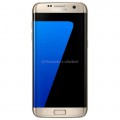 | Samsung Galaxy S7 Edge | March 2016 | 5.5-inch | Super AMOLED | 2,560 x 1,440 | 534 | 12MP | f/1.7 | 5MP | f/1.7 | Exynos 8890 | 2.3 GHz x 4 + 1.6 GHz x 4 | 4GB | 32GB | 200GB | 3,600 mAh | — | MicroUSB | Yes | — | — | 802.11 a/b/g/n/ac (2.4 GHz / 5 GHz) | 4.2 | Yes | A-GPS | Android 6.0 | Samsung UI | 150.9 x 72.6 x 7.7 mm | 157g | Black |
| Yes |  | HTC 10 | April 2016 | 5.2-inch | Super LCD | 2,560 x 1,440 | 565 | 12MP (HTC UltraPixel 2 with 1.55um pixel) | f/1.8 and 26mm focal length | 5MP (1.34um pixels) | f/1.8 and 23mm focal length | Snapdragon 820 | Quad Core | 4GB | 32GB | Yes, up to 2TB | 3,000 mAh | — | USB C | Yes | Top | Dual speaker | 802.11 a/b/g/n/ac (2.4 and 5 GHz) | 4.2 | Yes | GPS | Android 6.0.1 | HTC Sense | 145.9 x 71.9 x 3.0 - 9.0 mm | 161g | Carbon Gray with Black Face |
| Yes | 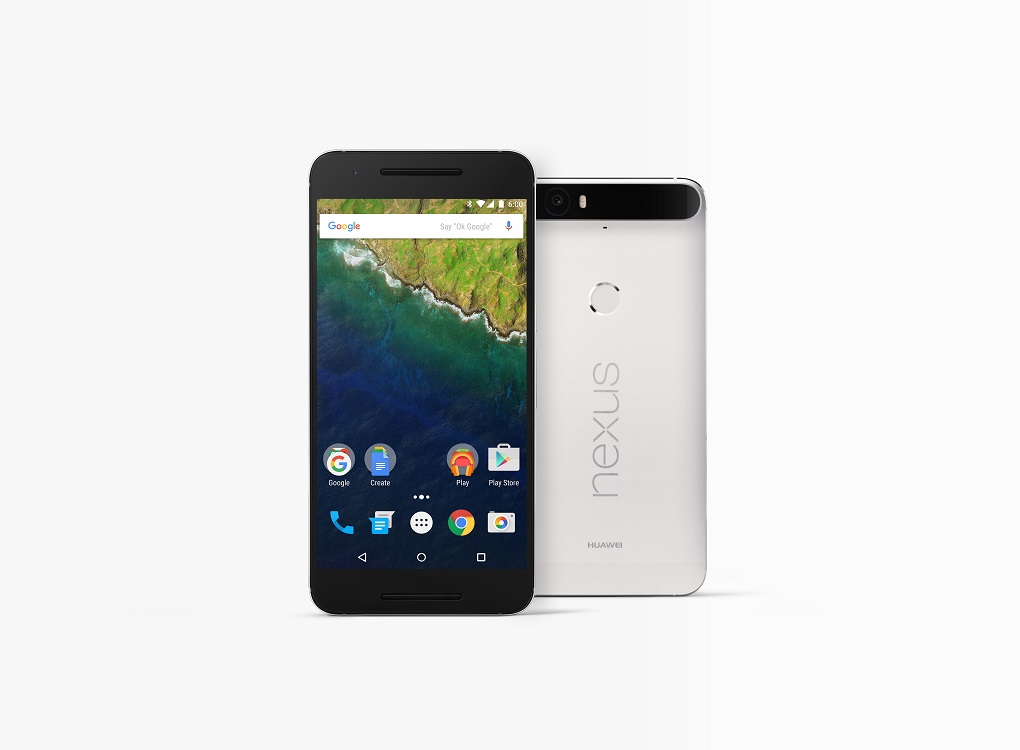 | Huawei Nexus 6P | September 2015 | 5.7-inch | AMOLED | 2,560 x 1,440 | 518 | 12.3MP | f/2.0 | 8MP | f/2.4 | Snapdragon 810 | 2.0 GHz x 4 + 1.55 GHz x 4 | 3GB | 32GB | — | 3,450 mAh | — | USB C | Yes | Top | Stereo | 802.11 a/b/g/n/ac | 4.2 | Yes | A-GPS | Android 6.0 | Stock | 159.3 x 77.8 x 7.3 mm | 178g | Aluminium |
LG G5 Conclusion
How, then, do we wrap up LG’s G5?
First and foremost, I was worried. I had used the G5 in Barcelona back in February, and loved it on first glance. Then, I had read a number of reviews by overseas reviewers which weren’t exactly glowing. I’m not afraid to admit that this poisoned my expectations a little, but I came at the G5 with an open mind.
If you do a lot of mobile photography, you’ll simply love the LG G5.
The LG G5 has a lot of good in it; the construction of the body is a welcome improvement over the G4. The software is good (our review unit had no carrier bloatware to speak of), and the camera modules are awesome. The fingerprint sensor is very responsive and works very well. Having a removable battery is still, in 2016, a wonderful thing.
There are things to be wary about though.
LG’s module system remains to be proven. As a concept, I like it. In the execution, I like it a little less. The modules just don’t feel like things you need to have; LG’s Cam Plus is a good idea, but it just doesn’t translate well to a good implementation — it doesn’t do enough to make the addition to the G5 worthwhile. The Bang and Olufsen Hi-Fi DAC sounds great … but really, most people probably won’t want this, and certainly not if they have to pay extra for it.
Will there be other modules in future? Things like a game pad, IR camera, … there’s a number of possibilities, but will we see them explored? I personally have my doubts. Will the modules bought for the LG G5 be supported on next year’s G6? Is there future compatibility guaranteed? I suspect there might not be, and that could be an issue.
In terms of value for money, it’s there with LG G5, but it could do to be $100 – $150 cheaper.
Not all of G5’s Friends require the modular port, though. LG 360 CAM and LG 360 VR require only a USB-C connection, and we’ll talk more about them in a separate review. Here’s a teaser though; the LG 360 CAM is a lot of fun, and a toy well worth adding to your gadget bag.
In terms of value for money, I can’t help but feel that the G5 (at an RRP of $1,099) is about a hundred dollars too expensive. We all understand the concept of currency conversion, local taxes and the ephemeral Australia Tax, but if we’re talking something of parity with foreign markets, then $950 – $999 might be a better price point. It’s more wallet friendly, and it would also give a significant edge to LG over the more expensive Samsung range.
Would I recommend you buy the LG G5? If you do a lot of mobile photography, then yes, because the cameras alone make it worthwhile. They are great fun to use, and produce great results. The make amateur photographers look good.
If you’re a power hungry user, it’s a line-ball as to whether you buy a G5 (with removable batteries as an option), or a phone that simply has a better battery built in (ala Samsung’s Galaxy S7 Edge). Being removable gives you a bit more flexibility … but equally, you might not want to swap batteries to get through a heavy day’s use without a charger.
I think LG have done something quite unique with the G5 this year, and it takes everything that’s good about the G4 and makes it quite a bit better. Will the module system take off? No one can really know that, least of all LG, and we’ll have to see what happens there.




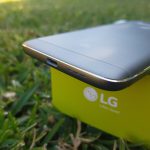

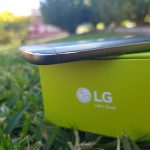
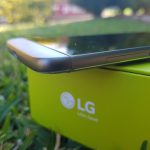

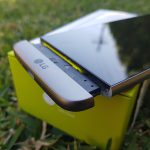
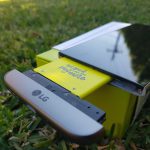















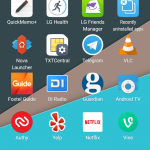



And being LG it will drop rapidly in price and be an excellent buy in a few months
I came to the conclusions that the ‘chin’ for the removable modules was a mistake. If they had dropped that, they could have had the phone a good 1cm shorter (since there’s little in it) and thus little bezel. That would really have put it in a sweetspot for size. As it is, its the same size as the G4, with a smaller screen. Then all you would need is the removable back (as they already had) and you could both replace the battery AND have the option of add on modules which would be incorporated into the backpiece as… Read more »
Brilliant review that doesn’t bash the G5 for it’s originality! Props to you for standing by your opinion 🙂
Thanks for the thorough review Chris on what is an important device.
One thing worth adding is that LG phones have historically dropped their price very rapidly, and can usually be had for significantly less dollars than a corresponding Samsung device a few months after release. My takeaway is that in say 3 or 4 months, this device will be available at a very attractive price online.
Nice review Chris. Much better than all the doom and gloom I’ve been hearing about it.
Also, I like the new rating system and review format. Good inclusion imo.